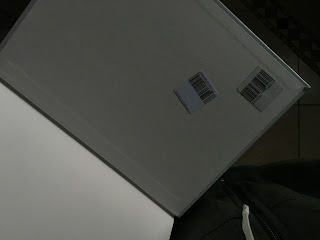Thus, here are three feature areas designed to get your
attention at Starbucks:
- Image 1 portrays a cash wrap, also known as a point-of-purchase
counter. Businesses of all types love utilizing this space which is located
near the register to get you to buy those cheap impulse purchase items.
- Image 2 makes use of the “decompression zone” which is the
first 10 feet in which customers become adjusted to their new environment, these
are typically located near the entrance.
- Image 3 showcases a freestanding display, these bad boys are
often used for displaying a retailer’s newest and most exciting offerings.
 |
| P-O-P Display |
 |
| Freestanding Display |
 |
| Entrance Display |











